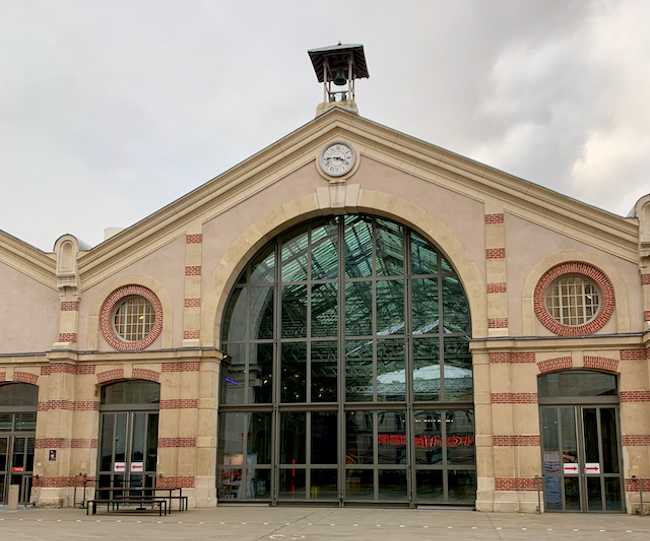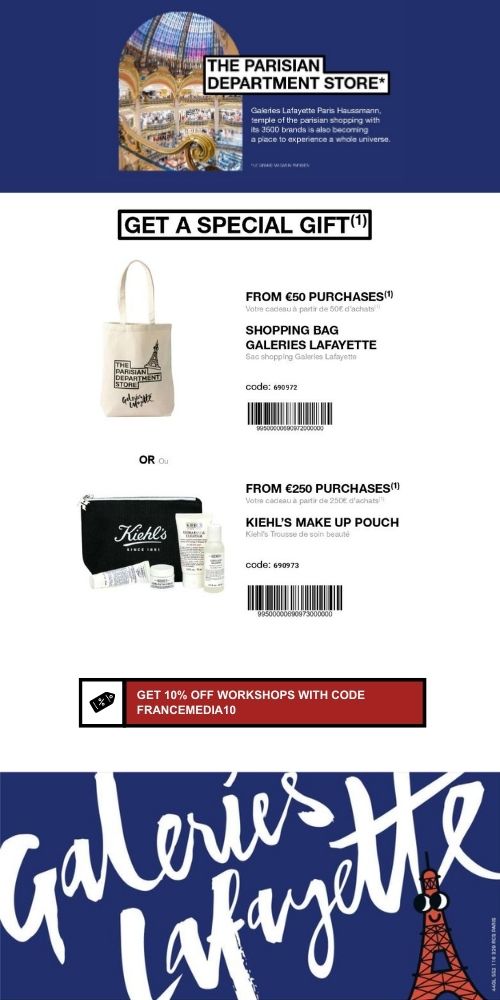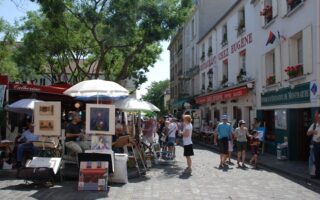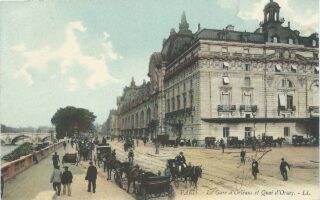Le 104: From Funerals to Cultural Center
- SUBSCRIBE
- ALREADY SUBSCRIBED?
BECOME A BONJOUR PARIS MEMBER
Gain full access to our collection of over 5,000 articles and bring the City of Light into your life. Just 60 USD per year.
Find out why you should become a member here.
Sign in
Fill in your credentials below.
Le 104 is a hive of activity when I visit, on a bone-chilling January day. It’s a special day; the Iván Navarro exhibition “Planetarium” is opening its doors. What is so special then, you might wonder if you know Le 104, a contemporary arts center used to hosting several exhibition every year? Not much, except that we are in January 2021, all museums and cultural institutions are still closed in France, and we have no clue as to their reopening date.
With the exhibition already installed (it was anticipated that museums would have reopened by now), Le 104 decided to go ahead and invite professionals for a physically distanced viewing, prior to being converted into a vaccination center for Parisians aged 75+. I am very glad they did.
I had not been to this arts center in a while, and was once again surprised by its industrial beauty, a far cry from the classical Haussmannian façades in the center of the city. Situated in the 19th arrondissement near the frontier with the 18th, Le 104 is a model in urban repurposing and inner city revitalization.
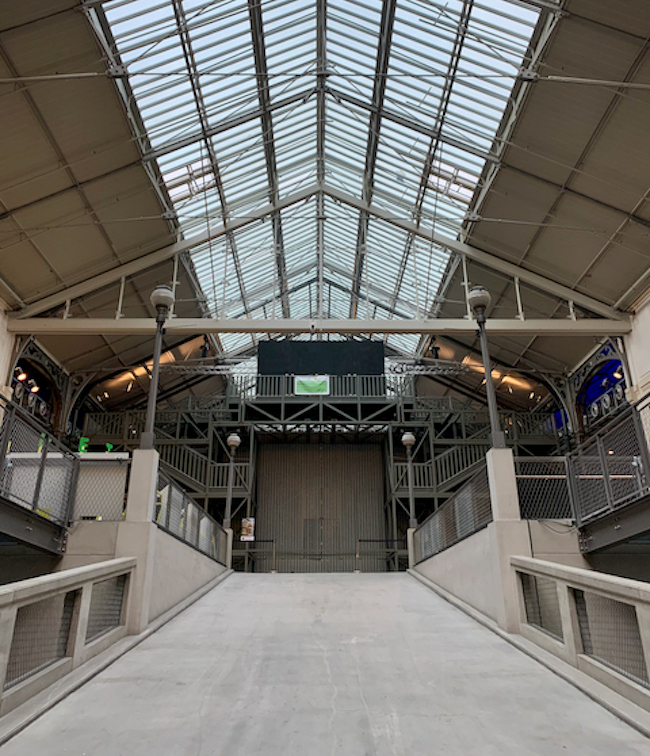
Photo credit © Sarah Bartesaghi Truong
The story of the building began in 1873, when architects Delebarre de Bay et Godon, working under the direction of Victor Baltard (of Les Halles fame), designed a vast industrial complex destined to house the Paris municipal undertakers. Under one roof (actually two, as the building is split into two hangars covered with thatched glass domes, similar to the railway stations of the 19th century), all the trades necessary to a funeral home worked side by side. At the peak of its activity, 27,000 hearses left the building every year, thanks to the work of 1,400 employees.
But times changed. First, after WWII saloon cars replaced horse-drawn carriages in the former stables. Then, in 1993, the city lost the monopoly on funeral services. By 1997, the service shut down, but a question remained: What to do with the building, whose historical significance was too important to see it bulldozed?
Thankfully, then Mayor Bertrand Delanoë pushed for the structure to be protected from demolition, sensing an opportunity for a redevelopment that would bring hope to a neighborhood in desperate need for a rebirth.
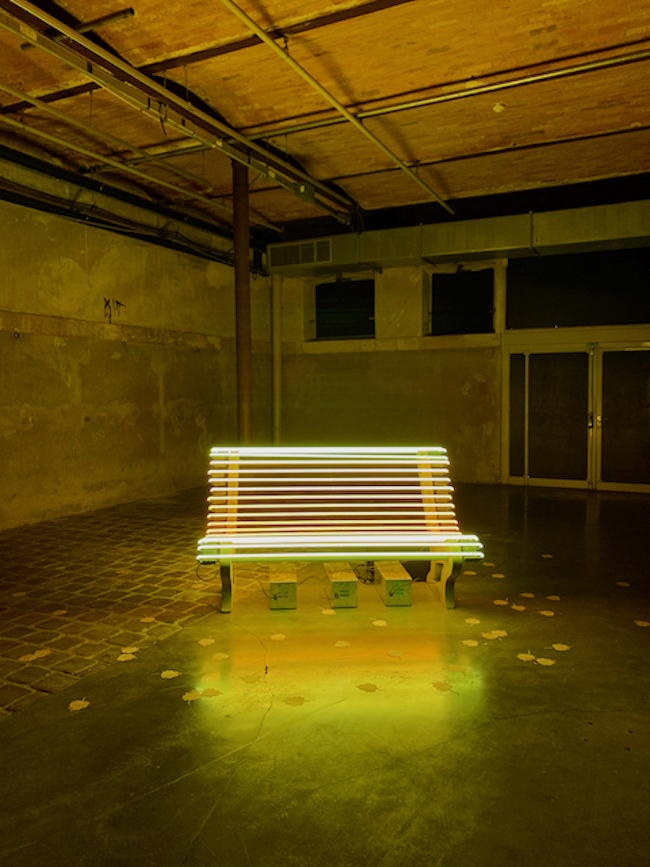
Photo credit © Sarah Bartesaghi Truong
When Le 104 opened in 2008, its mission was clear: to bring art to the local population, through a program of inclusion and education, and to act as a magnet for visitors from outside, to reduce the isolation and decline of the area.
The Aubervilliers district, cut in two like a scar by the rail tracks from Gare de l’Est, is home to a culturally diverse population, mostly issued from postcolonial immigration. 60% of the apartment buildings in the area are HLM (rent-controlled public housing), with a population density which is two and a half times the average in the city. The “crack hill,” now dismantled (hopefully never to return), was not very far from here.
The center has had a multi-pronged approach since its inception. It hosts exhibitions, dance shows, and fringe festivals, while housing a children arts center serving the neighborhood, cafés and restaurants, and artists’ residencies. It also engages in partnerships with international community arts centers across the world.
Its current director, José-Manuel Gonçalvès, was called to the rescue in 2010, when the duo of directors who had launched the project gave up in the face of disappointing attendance results and the lack of interaction with what were supposed to be the center’s target audience, the residents in the area.
His efforts seem to work, or at least they did before Covid-19 struck. In 2019, Le 104 welcomed 600,000 visitors. The impact on its surroundings, however, is more nuanced.
Certainly, the existence of this arts center has spurred other changes in the area. Next door, there is a a shared urban farm at the Jardin d’Éole, a welcome change for families with young children, in an area where greenery is at a premium. On the other side of the train tracks, the Halle Pajol, a former warehouse for the SNCF (the national rail operator in France), was saved from demolition and turned into a mixed-use space, the first energy-positive building in Paris. It houses a youth hostel, a library, a winter garden, shops and restaurants.
The jury is still out, however, on how much Gonçalves and his team have managed to change Le 104 from a “space” into a “place” for its neighbors.
Le 104
5 Rue Curial, 19th arrondissement
Tel: +33 (0)1 53 35 50 00
Metro: Riquet (line 7)
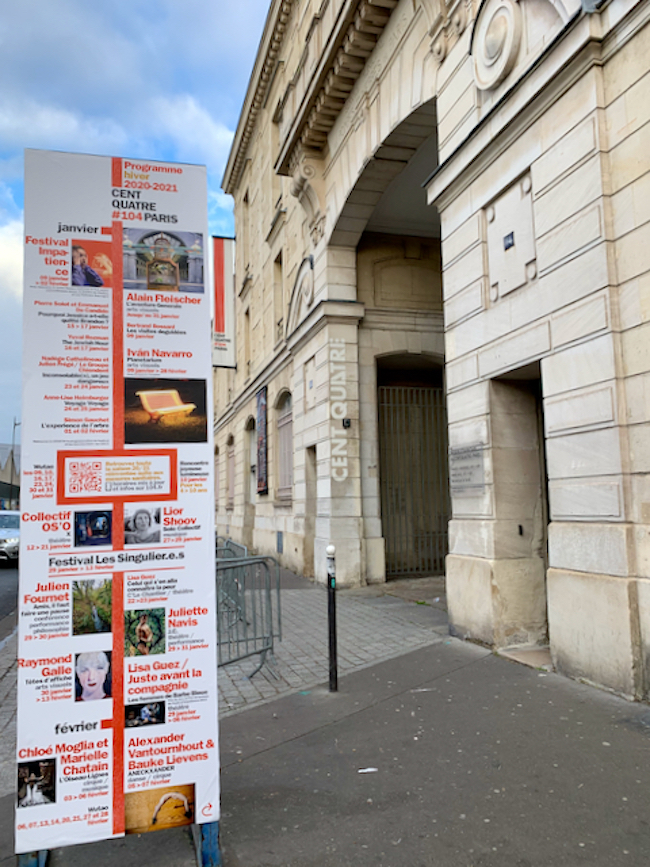
Photo credit © Sarah Bartesaghi Truong
Lead photo credit : Photo credit © Sarah Bartesaghi Truong
More in art center, art gallery, exhibition, Paris galleries
